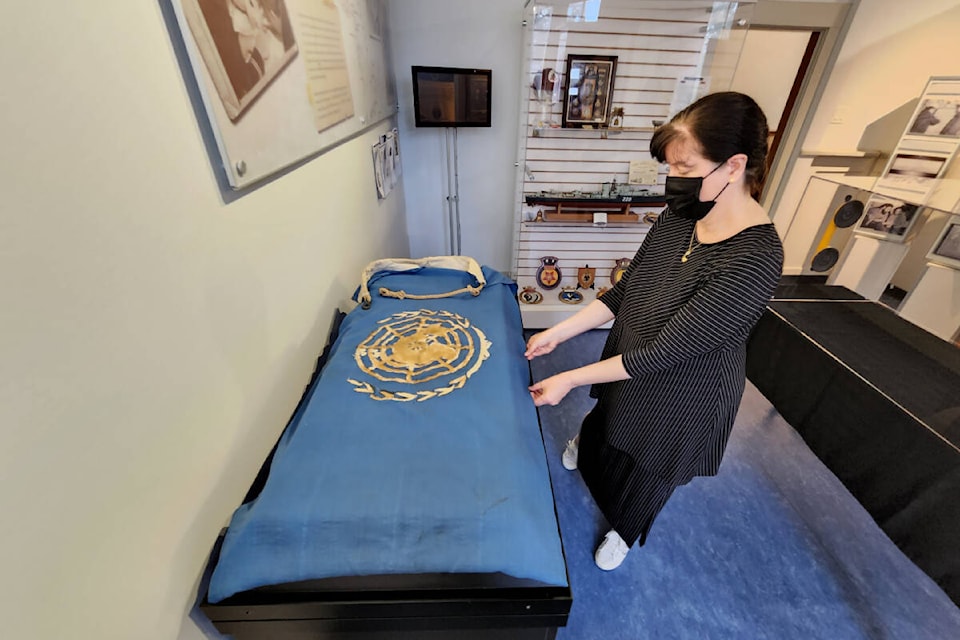Staff at the Naval and Military Museum are remembering one particularly historic craft project aboard a warship headed across the Pacific.
In the aftermath of the Second World War, the United Nations was established on Oct. 24, 1945, with the goal of preserving peace across the globe. But with the world scrambling to reshape itself after the biggest conflict in history, that peace wouldn’t last.
The HMCS Sioux departed from CFB Esquimalt to support the United Nation’s peacekeeping mission in Korea on July 5, 1950. It was one of three Canadian ships sailing across the Pacific Ocean to support the effort to defend South Korea after North Korean troops invaded on June 25, 1950. But the mission came together so quickly, the ship wasn’t supplied with a UN flag. The organization was still fledgling – its headquarters in New York wouldn’t be constructed for another two years – and flags weren’t widely supplied yet.
Up stepped George Mannix, chief yeoman of signals on HMCS Sioux, who gathered some unused fabric and another sailor’s copy of Time Magazine, which included a photograph of the UN flag. From there, to put it in Mannix’s own words: “We had our own sewing machine and away we went.”
“As any good yeoman will do – he made do and he made a flag,” said Chris Perry, Royal Canadian Navy historian. “The flag was barely three years old and if it’s in the newspaper it would have been black and white. So luckily Time Magazine had the colour picture. It was just all fortuitous. And the sailor, seeing something needed to be done and just doing it. Not thinking if I can – it just has to be done. So let’s get it done.”
The handmade flag was flown as the ship sailed across the Pacific until they made land in Kwajalein, in the Marshall Islands in the middle of the Pacific Ocean – where Sioux joined up with its Canadian counterparts and made for Korea (at that time they were forced to stop flying the flag as the other ships didn’t have one and they all displayed the same flag).
Perry said the flag is a physical reminder of the resolve the sailors had to show during that period, many of whom had spent years fighting during the Second World War only to be told they were deploying again.
“This is the other side of the world. I bet you a bunch of these guys never heard of Korea. It’s not like today where we go down for Korean barbecue,” he said. “So it is a whole different world. And if you ran out of stuff, you couldn’t just go to the store, send an email to get a replacement, or buy a flag or go to the stores on the base and get a UN flag. You had to make it.”
Mannix returned to Victoria in 1951, after Sioux’s first tour in Korea, and brought the flag back with him. Mannix’s son then donated the flag to the Naval and Military Museum at CFB Esquimalt, where it remains on display.
READ MORE: National Peacekeepers’ Day marked in Esquimalt with ceremony, flyover
@moreton_bailey
bailey.moreton@goldstreamgazette.com
Like us on Facebook and follow us on Twitter.
